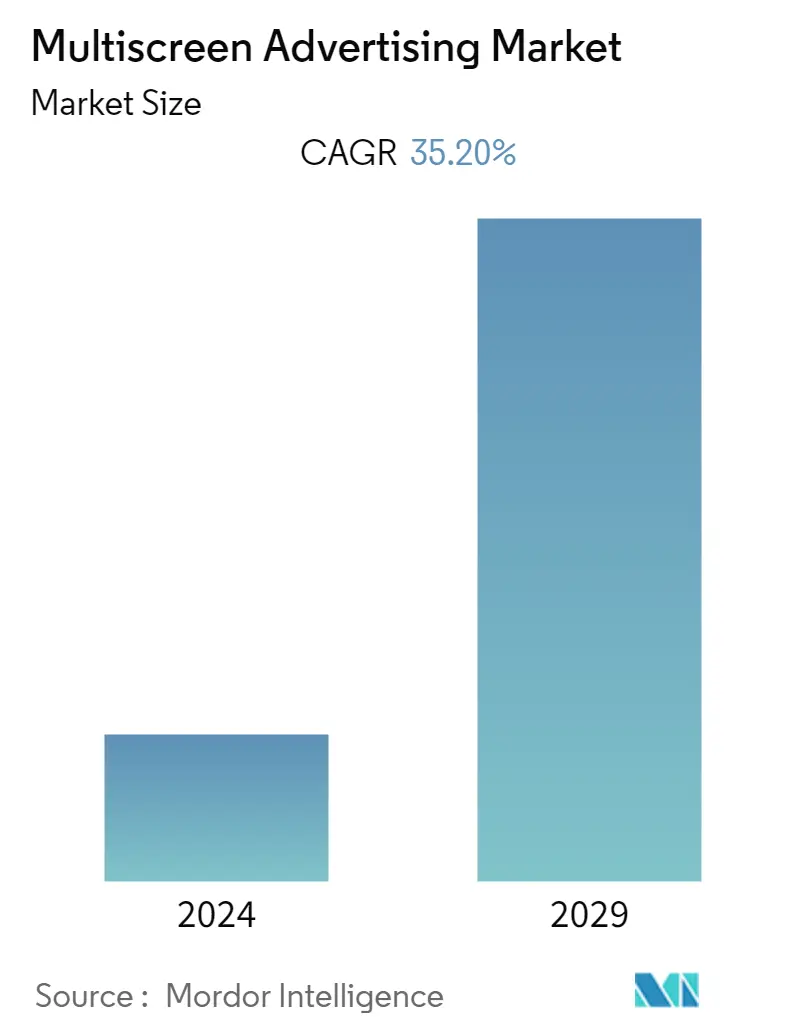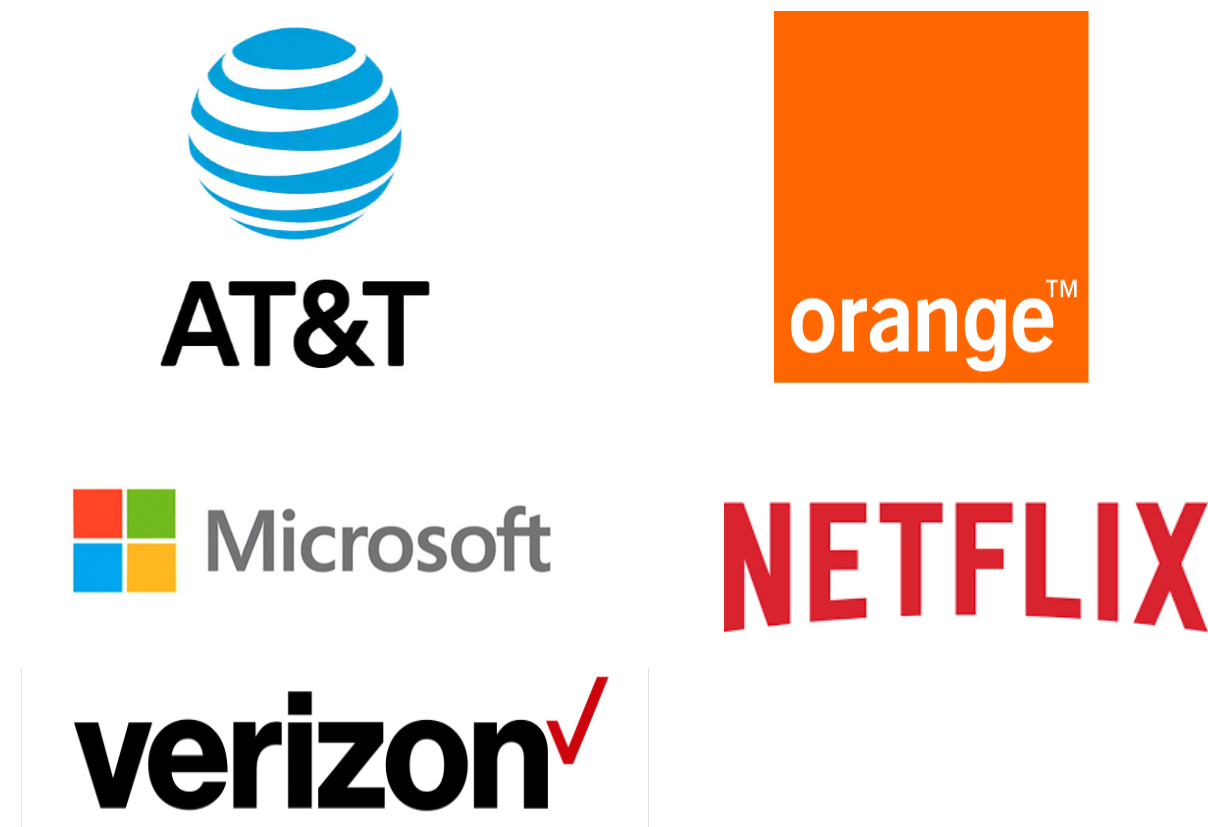Market Size of Multiscreen Advertising Industry

| Study Period | 2019 - 2029 |
| Base Year For Estimation | 2023 |
| CAGR | 35.20 % |
| Fastest Growing Market | Asia Pacific |
| Largest Market | North America |
| Market Concentration | Low |
Major Players
*Disclaimer: Major Players sorted in no particular order |
Multi-Screen Advertising Market Analysis
The multiscreen advertising market is expected to grow at a CAGR of 35.20% over the forecast period (2021-2026). According to Zenith's Media, mobile internet consumption will account for 26% of global media consumption in 2019, from 19% in 2016. People around the world will spend an average of 122 minutes a day, accessing the mobile internet via browsers and apps, an amount that has grown from just ten minutes a day since 2010.
- With an increase in the advertising expenditure of companies, the multiscreen advertising market is also growing. According to a study conducted by Google, 90% of the users switch devices to accomplish their goals. While watching a TV show on a large LCD television, they may react to it on a social network using a smartphone or adjust the recording settings of their DVR with a tablet. These activities are no longer restricted to a single screen.
- The increase in big data analytics has enabled companies to provide targeted ads to people, thus, decreasing the conversion costs of the companies. The US consumers dedicate one-fourth of their media consumption time in mobile. This has led to a fast growth in mobile media consumption, driving the multiscreen advertising market.
- Moreover, the increase in mobile media consumption, along with onscreen advertising in every application, has changed the consumer's buying behavior and brand awareness, which is driving the multiscreen advertising market.
- However, the intrusive nature of advertisements and the rising number of adblocker in the devices are hindering the growth of the market studied.
Multi-Screen Advertising Industry Segmentation
A multiscreen advertisement campaign is a campaign which is simultaneously displayed on an array of devices. Most common digital multiscreen campaigns are displayed on desktops, smartphones, tablets, and televisions. It is broadcasted on various platform depending upon the type of content.
| By Type of Content | |
| Static | |
| Dynamic | |
| Interactive |
| By Platform | |
| Television | |
| Desktop/Laptop | |
| Mobile/Tablet | |
| Gaming Consoles | |
| Other Platforms |
| By Geography | |
| North America | |
| Europe | |
| Asia-Pacific | |
| Latin America | |
| Middle East & Africa |
Multiscreen Advertising Market Size Summary
The multiscreen advertising market is experiencing significant growth, driven by the increasing consumption of mobile media and the shift towards targeted advertising across multiple devices. As consumers engage with content on various screens simultaneously, such as watching TV while using a smartphone or tablet, advertisers are leveraging big data analytics to deliver personalized ads, reducing conversion costs. This trend is further supported by the widespread use of social networks, where unique account IDs enable precise audience targeting. The rise in mobile and tablet device usage, coupled with the growing importance of brand awareness and consumer behavior changes, is propelling the market forward. However, challenges such as ad intrusiveness and the prevalence of ad blockers pose obstacles to market expansion.
North America leads the multiscreen advertising market, with the United States at the forefront due to its high advertising expenditure and the presence of major tech companies like Facebook and Google. The region's rapid adoption of new technologies and focus on cost-effective advertising strategies are driving the market's growth. The fragmented nature of the market, with numerous players like Sky Mobile, Orange SA, and Microsoft Corporation, contributes to its competitive landscape. Recent acquisitions, such as Orange SA's purchase of SecureLink, highlight the strategic moves by companies to strengthen their market positions. As device penetration continues to rise, the competition among players is expected to intensify, further shaping the market dynamics.
Multiscreen Advertising Market Size - Table of Contents
-
1. MARKET DYNAMICS
-
1.1 Market Overview
-
1.2 Market Drivers
-
1.2.1 Shifting Trends Towards Mobile Media Consumption
-
1.2.2 Ability to Target Relevant or Personalized Ads
-
-
1.3 Market Restraints
-
1.3.1 Intrusive Nature of Ads on User Experience
-
1.3.2 Rising Adoption of Ad-blockers on Devices
-
-
1.4 Industry Value Chain Analysis
-
1.5 Industry Attractiveness - Porter's Five Forces Analysis
-
1.5.1 Bargaining Power of Suppliers
-
1.5.2 Bargaining Power of Buyers/Consumers
-
1.5.3 Threat of New Entrants
-
1.5.4 Threat of Substitute Products
-
1.5.5 Intensity of Competitive Rivalry
-
-
-
2. MARKET SEGMENTATION
-
2.1 By Type of Content
-
2.1.1 Static
-
2.1.2 Dynamic
-
2.1.3 Interactive
-
-
2.2 By Platform
-
2.2.1 Television
-
2.2.2 Desktop/Laptop
-
2.2.3 Mobile/Tablet
-
2.2.4 Gaming Consoles
-
2.2.5 Other Platforms
-
-
2.3 By Geography
-
2.3.1 North America
-
2.3.2 Europe
-
2.3.3 Asia-Pacific
-
2.3.4 Latin America
-
2.3.5 Middle East & Africa
-
-
Multiscreen Advertising Market Size FAQs
What is the current Multiscreen Advertising Market size?
The Multiscreen Advertising Market is projected to register a CAGR of 35.20% during the forecast period (2024-2029)
Who are the key players in Multiscreen Advertising Market?
AT&T Inc., Orange SA, Microsoft Corporation, Netflix Inc. and Verizon Wireless are the major companies operating in the Multiscreen Advertising Market.

